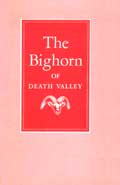.gif)
MENU
![]() Photographs
Photographs
|
Fauna of the National Parks — No. 6
The Bighorn of Death Valley |

|
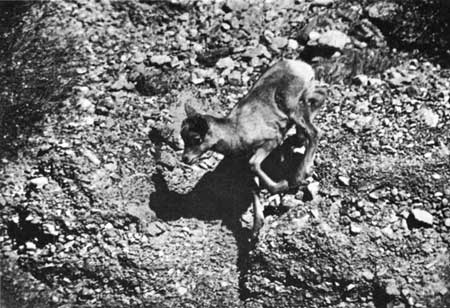
Figure 36.—Having no other
lambs to play with it played its own games, usually in the semidarkness
of early dawn or late evening. It raced along the washes and leaped up
cliffs that its mother usually climbed around.
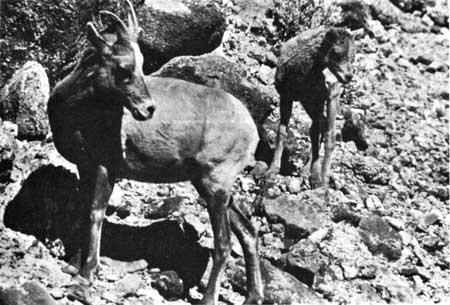
Figure 37.—When Old Mama's
lamb was 6 weeks old, New Mama came into the wash with another lamb of
the same age.
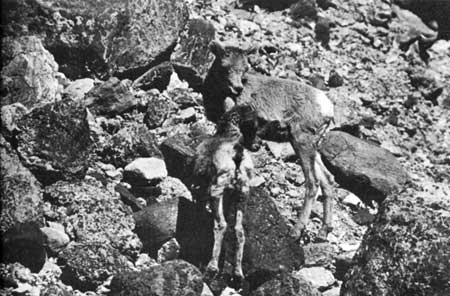
Figure 38.—Old Mama's lamb
went up to meet the new lamb at once, and they became inseparable
companions.
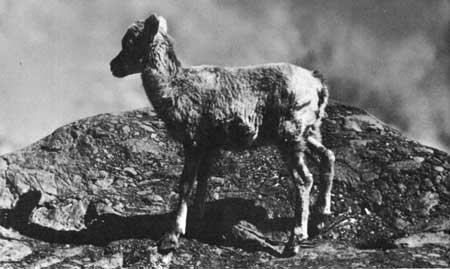
Figure 39.—Rough pelage
among lambs (this is Old Mama's) is fairly common and is likely to be
accompanied by a cough and lethargy. The unknown cause of these
symptoms may be a contributing factor to lamb mortality.
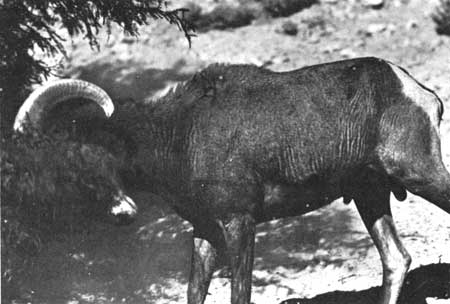
Figure 40.—Mesquite is a
favorite thrashing post for rams during rut and serves in this respect
as an introductory note to sign reading. A dismantled shrub, however,
should not always be accepted as the sign of ram activity, because
bighorn of all age classes and sexes may attack shrubs, especially
during the spring shedding period.
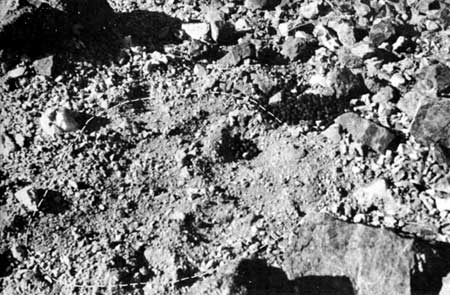
Figure 41.—This typical
bighorn bed, 2 to 3 feet long, has been pawed in the loose soil of a
rocky slope. This bed, on a slope in rough terrain, accompanied by a
large number of pellets, probably is the night bed of an adult. Beds in
open washes are likely to be day beds, for we have no record of night
bedding there.
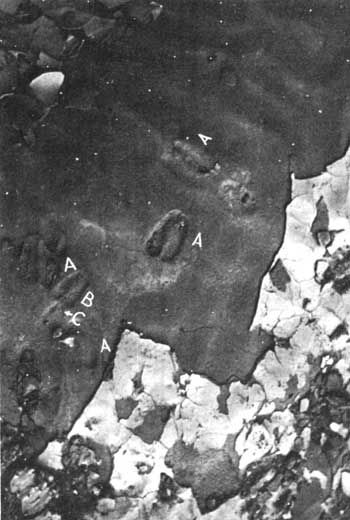
Figure 42.—These three sizes
of prints do not indicate three animals but probably two: A—four
tracks of front feet; B—a hind foot of possibly the same animal;
C—a smaller animal, probably a lamb. Since each animal leaves two
sizes of prints it would take at least five sizes of prints to indicate
three animals.
Continued >>>
 Top
Top
Last Modified: Thurs, May 16 2002 10:00:00 pm PDT
http://www.cr.nps.gov/history/online_books/fauna6/faunap5.htm
![]()
